Soybean Aphids: Sampling, Thresholds and Management
Soybean aphid, Aphis glycines (Hemiptera: Aphididae), is an introduced insect from Asia. They were first observed in North America in Wisconsin during the summer of 2000. They were first detected in Manitoba late in the summer of 2001, but only in small numbers. High populations are erratic and do not occur every year. But when high levels do occur they can be highly economical if not well regulated by natural enemies and weather. This factsheet summarizes methods for sampling, thresholds, management options, and natural regulating factors for soybean aphids.
Sampling Soybean Aphids
Host plants: Soybean aphids are a potential pest of soybeans only. You do not have to worry about them in dry beans or any other crop. Soybean aphids survive the winter in the egg stage, and buckthorn (Rhamnus sp.) is the only overwintering host. There are two or three generations of wingless females before a winged generation leaves buckthorn in search of soybeans. It is not known if soybean aphids can overwinter in Manitoba. Populations in Manitoba may depend on what moves in and when it moves in.
Identification: Soybean aphids are small, light yellow with black cornicles (“tailpipes”). Winged adults will have a black head and thorax (figure 1). They are easy to overlook when sampling fields, so you have to look carefully for them. Because they are yellow it is easy to mistake them for a piece of debris, pollen, etc. A hand-lens is good to have for verification when sampling.
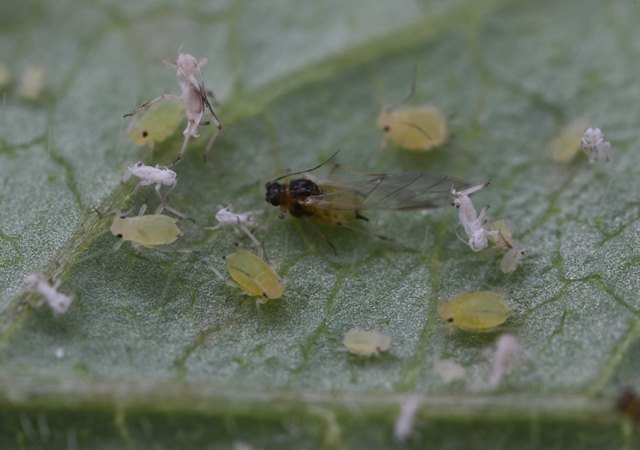
Figure 1. Winged and wingless soybean aphids
Photo by Jordan Bannerman, University of Manitoba
When to sample: It is always good practice to be scouting crops at least weekly for insects, pathogens or other conditions affecting crop development. When soybean aphids colonize soybeans depends on the region. In more northern regions, such as the Canadian prairies, soybeans are typically not colonized until after bloom (R1). Sampling at least weekly after bloom and including observations specific for soybean aphid is thus important.
Estimating aphid densities: Turn over leaves and look for aphids, caste skins, and honeydew. Early-season aphids may be tended by ants, which may help you find colonies. Aphid honeydew can promote black sooty mold on leaves. Soybean aphids are often attracted to new growing points of soybeans, including expanding trifoliate leaves. Do not confuse soybean aphids for nymphs of potato leafhopper (Empoasca fabae), or pirate bugs. Soybean aphids are not easily dislodged from plants, so sweep netting is not a recommended sampling technique.
The minimum number of plants to sample will vary with the sampling program. The app Aphid Advisor uses counts on 10 plants for the decision process. A general recommendation is to check a minimum of 30 plants (6 plants in 5 areas) per field. Examine the entire plant and estimate populations of soybean aphids. Once soybean aphid numbers reach 250 aphids per plant, scout the field frequently to determine if soybean aphid numbers are increasing.
When aphid levels are high, exact counts are not possible and would consume too much time. Estimates after a quick examination of the plant will be sufficient. If aphid populations are high, it may be helpful to estimate aphids in categories, with increments of 50 or 100 aphids. Figure 2 shows soybean aphids, and the white shed skins from aphids that have molted. Avoid including the shed skins in your counts.
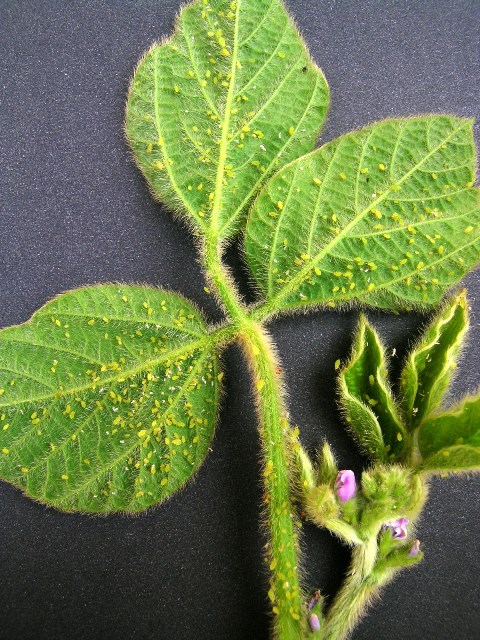
Figures 2. Soybean leaf with 159 soybean aphids (left leaflet),

Figures 2. Soybean leaf with 159 soybean aphids (left leaflet),
69 aphids (top leaflet), and 88 aphids (right leaflet).
Estimating natural enemy levels: At times natural enemies may effectively regulate soybean aphid levels, and if levels are high enough it may be most economical not to apply an insecticide even when levels are above the action threshold. An app is available to assist in determining whether natural enemy levels are high enough so that not spraying is the most economical decision. Using this requires learning to identify some of the key natural enemies of soybean aphid. For those you can identify and count, this data also becomes part of the decision making process. The app for factoring in natural enemies is called Aphid Advisor. You can find information on how to get the app at: http://www.aphidapp.com/
Randomly select plants to assess: When scouting for soybean aphids, and other potential pests, randomly select plants to do counts on. If you look for plants with lots of aphids on them to do your estimates on, your estimates will not reflect the average population in the field. Soybean aphid populations can occur in pockets of higher levels, with many of the surrounding plants having very little or no soybean aphids on them. Finding a few pockets of higher levels in the field may not necessarily be a cause for alarm, but do keep watching the overall levels and how well things seem to be regulated.
Damage and Thresholds
There are about 840 species of aphids in Canada, and the way aphids colonize and interact with plants varies greatly. For some aphid species on some crops, action thresholds (sometimes called economic thresholds) can be relatively low because of the way aphids colonize and affect the plant. For soybeans and soybean aphid the action threshold and potential of aphids to cause yield loss is at the other end of the spectrum, it takes a lot of aphids to cause economic yield loss.
Soybean aphids damage plants by sucking the sap from plant tissues. At higher levels of aphids, plants may yellow and become stunted, which can reduce pod and seed production. Aphids only digest about 10% of the nutrients they take in, the rest is secreted as a sticky substance known as honeydew. This honeydew, in the absence of rain, collects on the surface of the leaves and acts as a substrate for a sooty mould which can turn the leaves black and rubbery. When soybean aphids are abundant the leaves may get sticky as well from the honeydew they excrete.
Action Threshold: The action threshold for soybean aphids (where insecticide application is recommended to prevent economic loss) is:
• 250 aphids per plant on average,
• and the population is increasing,
• and the plants are in the R1 (beginning bloom) to R5 (beginning seed) growth stages.
• 250 aphids per plant on average,
• and the population is increasing,
• and the plants are in the R1 (beginning bloom) to R5 (beginning seed) growth stages.
Once soybeans reach full seed set (R6), research has not shown a reliable yield gain from an insecticide treatment.
The reason that "and the population is increasing" is part of the threshold is because the actual economic injury level, where control costs will equal yield loss, is actually about 670 aphids per plant. The action threshold, where control is suggested, has been set much lower than 670 to allow time for an insecticide to be applied before increasing populations could potentially reached 670 per plant. The population doubling time for soybean aphids is on average about 7 days.
This threshold provides about a 7-day lead time before aphid populations are expected to exceed the economic injury level (670 aphids per plant), where cost of control is equal to yield loss. Consider checking aphid densities again in fields approaching the action threshold (3 to 4 days after the initial treatment decision is made). If aphid numbers have decreased, or are still just below the action threshold, or if natural enemies are present, producers may wish to delay treatment. Populations sometimes can decline naturally because of natural enemies or weather and not exceed the action threshold.
The action threshold is based on the average of multiple plants selected from throughout the field and not just hotspots or field borders. Avoid making treatment decisions based on field borders. Small aphid hotspots often collapse from predation, parasitism or emigration.
Estimating yield loss from soybean aphids: The studies that were the basis for the action threshold provide information on the amount of yield loss to expect from high populations of soybean aphids. The unit used to measure aphid feeding in the study is called aphid-days; an aphid-day being one aphid feeding for one day. Ten aphid-days could be 10 aphids feeding for one day, or one aphid feeding for 10 days. The studies found that yield was reduced by 6.88% for every 10,000 aphid-days accumulated1. So if there were 500 aphids per plant on average, feeding for 20 days, a yield loss of roughly 7% could be expected.
Crop value and action threshold: When the value of the soybean crop has increased or is high, it is not advised to use an action threshold below 250 per plant and the population increasing. There is already a large gap between the economic injury level and the action threshold that is suggested. Setting an action threshold at lower aphid densities increases the risk to producers by treating an aphid population that is growing too slowly to exceed the economic injury level in 7 days, eliminates generalist predators, and exposes a large portion of the soybean aphid population to selection by insecticides, which could lead to development of insecticide resistance1.
Incorporating natural enemies into management decisions for soybean aphids: The action threshold for soybean aphids can be adjusted using Aphid Advisor to include natural enemies. Levels of soybean aphids and six key groups of natural enemies are counted, and a dynamic action threshold, which includes the impact of natural enemies, is calculated. To effectively use this app, it is good to know some of the key natural enemies of soybean aphids.
Key Natural Enemies of Soybean Aphid
In some years high levels of natural enemies may be noted while monitoring levels of soybean aphid. Predaceous insects are the easiest natural enemies to recognize; levels of parasitism and insect pathogens are not often as obvious but with training can be estimated as well. Lady beetles, lacewings, and larvae of hover flies are some of the common and easily recognizable predators in soybean fields. When checking soybean fields, consider whether the aphid populations are increasing or decreasing, and the level of natural enemies present.
Lady beetles: Common species of lady beetle that may be noted in soybean fields include the sevenspotted lady beetle, Coccinella septempunctata, and the multicolored Asian lady beetle, Harmonia axyridis. A study looking at predation rates by these two species of lady beetles on soybean aphids found that for sevenspotted lady beetle third instar larvae could each consume up to 105 aphids per day, adult females could each consume up to 115 soybean aphids per day, and each adult male up to 78 aphids per day when soybean aphids are high2. For multicolored Asian lady beetle, third instar larvae could each consume up to 112 aphids per day, adult females could each consume up to 95 soybean aphids per day, and each adult male up to 53 aphids per day when soybean aphids are high.
Lady beetles: Common species of lady beetle that may be noted in soybean fields include the sevenspotted lady beetle, Coccinella septempunctata, and the multicolored Asian lady beetle, Harmonia axyridis. A study looking at predation rates by these two species of lady beetles on soybean aphids found that for sevenspotted lady beetle third instar larvae could each consume up to 105 aphids per day, adult females could each consume up to 115 soybean aphids per day, and each adult male up to 78 aphids per day when soybean aphids are high2. For multicolored Asian lady beetle, third instar larvae could each consume up to 112 aphids per day, adult females could each consume up to 95 soybean aphids per day, and each adult male up to 53 aphids per day when soybean aphids are high.
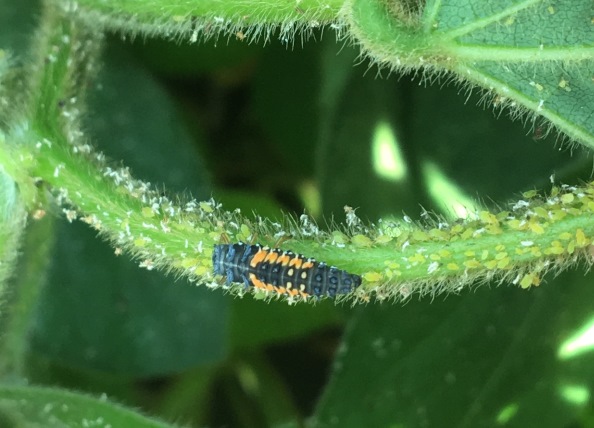
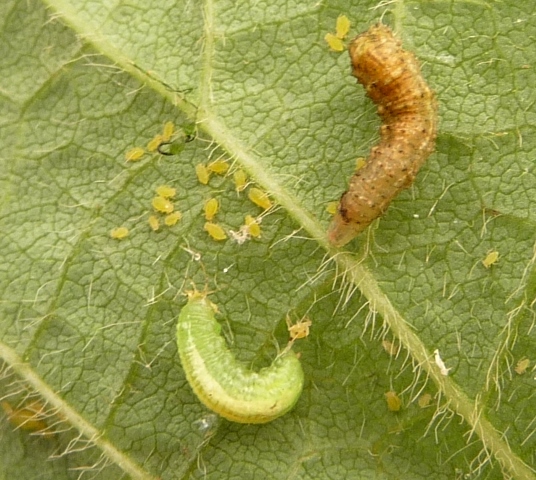
Figure 3. Larva of multicolored Asian lady beetle Figure 4. Larvae of two species of hover fly and soybean aphids
Hover flies (Syrphids): Adults are good bee mimics, and are easy to recognize. The larvae may not be as well known. Hover fly larvae (figure 4) are legless, and narrow towards the head. There are different species that can vary in color, often brown or green. Aphid consumption varies depending on the species. Larvae of Allograpta obliqua consume an average of 17 aphids per day, which is the value used for Aphid Advisor. For some species higher levels of aphid consumption have been reported. For example, larvae of Eupeodes americanus each consume an average of 47 aphids per day.
Minute pirate bugs (Orius): The adults are quite small (3-5 mm), oval and black with white markings (figure 5). Nymphs are orange to brown. At times they can be a dominant component of the natural enemies in soybean fields. Fifth instar nymphs of Orius insidiosus consume up to eight aphids per day and adult females up to 11 per day3.
Green lacewings: Adults are green, with wing veins that look like netting, and have gold eyes.
Larvae are alligator-like in general shape (similar to lady beetle larvae), cream coloured with brown markings and sickle-shaped mandibles (figure 6). Larvae have long bristles coming out from the sides. In addition to aphids they will also eat small caterpillars and other insects. Green lacewing larvae can consume up to 36 aphids per day.
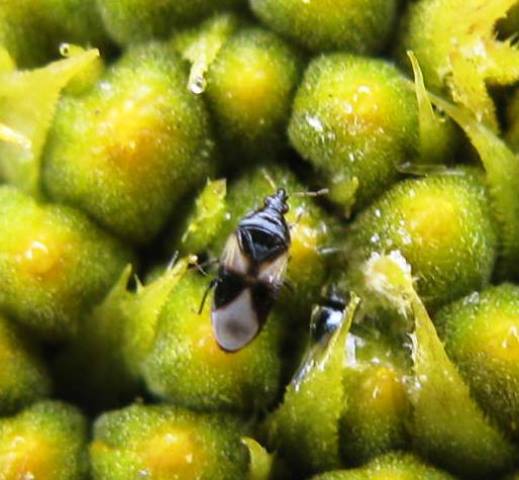
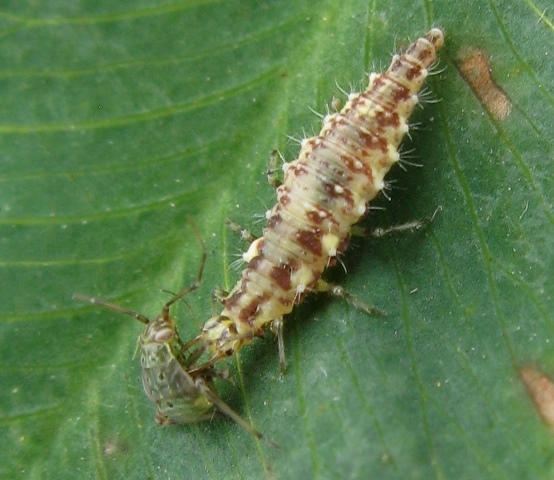
Figure 5. Minute pirate bug Figure 6. Lacewing larva.
Larvae are alligator-like in general shape (similar to lady beetle larvae), cream coloured with brown markings and sickle-shaped mandibles (figure 6). Larvae have long bristles coming out from the sides. In addition to aphids they will also eat small caterpillars and other insects. Green lacewing larvae can consume up to 36 aphids per day.


Figure 5. Minute pirate bug Figure 6. Lacewing larva.
Fungal pathogens: Several fungi are capable of infecting soybean aphids. Infected aphids are pinkish, white or tan and fuzzy from the growth of fungi out of their bodies. Fungal pathogens are most likely to reduce aphid numbers in warm and humid conditions.
The use of broad-spectrum fungicides from some fungicide groups has been shown to reduce entomopathogens that attack soybean aphid. Fungicide applications may certainly be economical at times. However, growers and crop consultants need to be aware of the potential pest resurgence caused by prophylactic use of fungicides and of the interactions with soybean aphid populations and fungal entomopathogens.
Insecticides for Managing Soybean Aphids
Several foliar insecticides are available for control of soybean aphids. See the Guide to Field Crop Protection for an updated list. If it is decided that an insecticide application would be economical, the following should be considered:
Timing: Bloom (R1-R2) and pod development (R3-R4) are the most critical growth stages to protect for obtaining optimum yields. Heavy soybean aphid feeding injury during R1 to R4 causes flowers and small pods to abort, which significantly reduces the number and size of beans per pod and per plant. Complete coverage is important for optimum control because soybean aphids feed on the underside of the leaves.
Insecticides applied at too early of a crop stage, or to populations below economic threshold, may create conditions in the field where soybean aphid populations grow rapidly above the economic threshold, resulting in more insecticides needing to be applied, and a greater overall cost of control than was necessary. Aphids have short lifecycles and many generations in a season, while their natural enemies generally have longer lifecycles. So careful attention needs to be paid to following action thresholds and proper timing of sprays. Destroying the natural control of plant feeding insects too early in the season or at below economical populations can result in increased problems later in the season.
Check strips: If the action threshold is surpassed and fields are sprayed to control soybean aphids, consider leaving an unsprayed area as a check strip to determine the performance of the insecticide and whether the treatment did prove to be valuable.
Pollinator protection: Soybeans can also be a source of nectar for honeybees, as well as wild bees such as sweat bees. So the general guidelines for protecting bees should also be followed if soybean fields are still flowering when being treated for soybean aphids.
Seed treatments for soybean aphids: Some seed treatments contain an insecticide component and are registered for soybean aphids. The level of control of soybean aphids from seed treatments is likely to be inconsistent, however, and seed treatments are applied prior to knowing whether soybean aphids would be economical. The insecticide component in all current seed treatments registered for soybean aphids belongs to a group called neonicotinoids. The residual activity of systemic neonicotinoid seed treatments breaks down after 35 to 42 days after planting as the plant biomass increases and the effectiveness of the insecticide decreases. When soybean aphid populations are high, populations may continue to increase after insecticide seed treatment activity has diminished and reach the action threshold later in the season.
Selected References
1Economic Threshold for Soybean Aphid (Hemiptera: Aphididae). 2007. Ragsdale, D.W., B. P. McCornack, R. C. Venette, B. D. Potter, I. V. MacRae, E. W. Hodgson, M. E. O’Neal, K. D. Johnson, R. J. O’Neil, C. D. DiFonzo, T. E. Hunt, P. A. Glogoza, and E. M. Cullen. Journal of Economic Entomology. Vol. 100: 1258-1267.
2Predation by Coccinella septempunctata and Harmonia axyridis (Coleoptera: Coccinellidae) on Aphis glycines (Homoptera: Aphididae). 2009. Xue, Y., C. A. Bahlai, A. Frewin, M. K. Sears, A. W. Schaafsma, and R. H. Hallett. Environmental Entomology. Vol. 38: 708-714.
3Incorporating Natural Enemy Units into a Dynamic Action Threshold for the Soybean Aphid, Aphis glycines (Homoptera: Aphididae). 2014. Hallett, R.H., C.A. Bahlai, Y. Xue and A.W. Schaafsma. Pest Management Science. Vol. 70: 879-888.
Produced June 2018, by
John Gavloski, entomologist, Manitoba Agriculture
